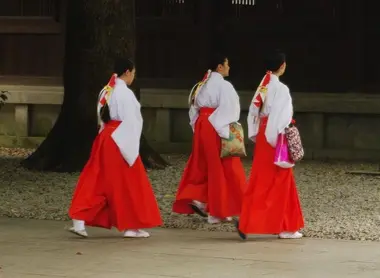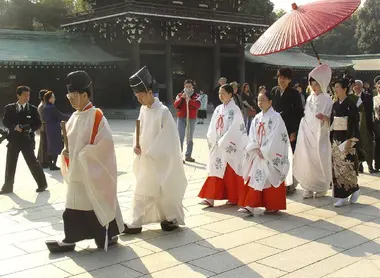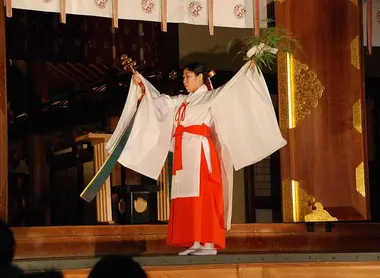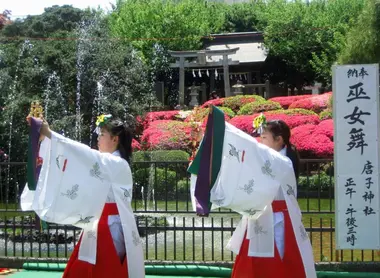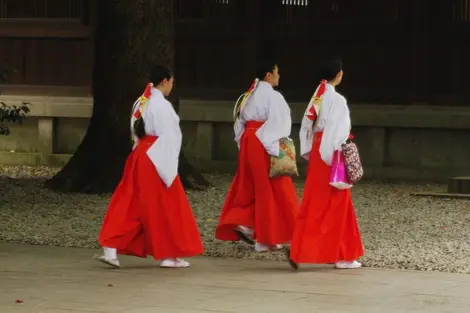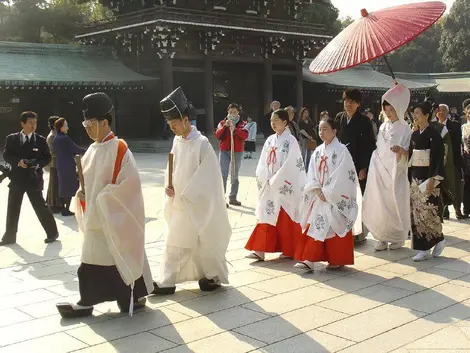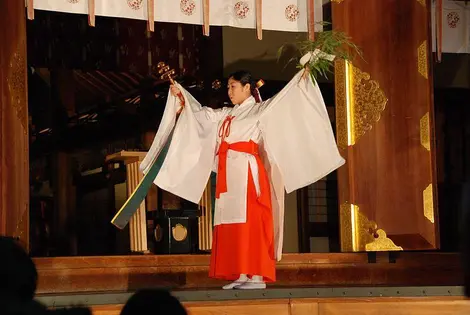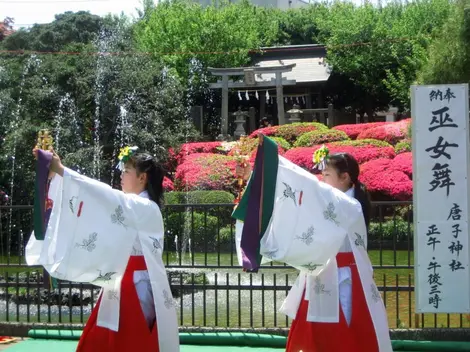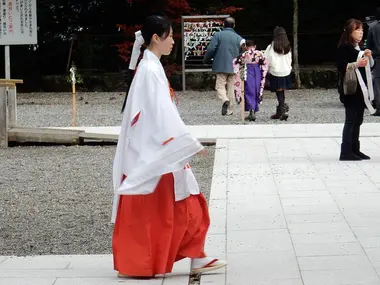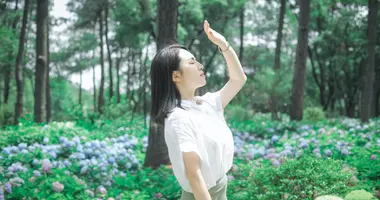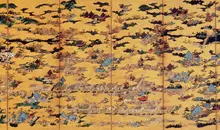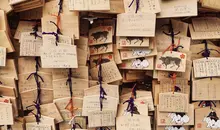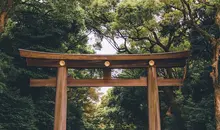The miko 巫女
- Pubblicato il : 13/05/2019
- Per : S.R.
- Youtube
Les jeunes filles du shintoïsme
Aux abords des sanctuaires shintoïstes japonais, il n'est pas rare de découvrir la silhouette d'une jeune fille occupée à des tâches d'entretien. Les miko, leur nom, sont partie intégrante du culte ancestral nippon et un des emblèmes de la religion shintoïste.
A very distant origin
The origin of the Miko dates back to the end of the Jomon period (-14,000 to -300 BC) when women shamans entered into convulsions and trances to transmit the messages of the deities. Over time, they grew in importance, performing religious services and taking charge of various political and social activities.
From the Nara era (710 - 794), the political powers of the archipelago never stopped trying to regulate the activity of the Miko, to both control it and prevent abuse.
During the Sengoku period (1477 - 1573), the institution of the Miko also suffered from the chaos of the country and many priestesses brightened up in the country, becoming "arukimiko" - literally, "itinerant Miko" and exercising activities close to prostitution.
It was during the modern era, from the Edo period (1603 - 1868) to the Meiji era (1868 - 1912), that their role was gradually formalized, the practice of shamanism being prohibited under the Tokugawa while the imperial restoration prohibits any spiritual activity.
- Read also: Shintoism
The current Miko
The Miko that populate Shinto shrines today is easily recognizable. They wear a red hakama, the chihaya (white kimono top with wide cuffs), Japanese sandals, and quite often a hanakanzashi, a flower ornament that serves as a headdress.
They take care of keeping the shrine shop, offering omikuji, helping with the maintenance of the shrine, assisting the kannushi (Shinto priests in charge of the shrine) as well as performing the traditional dances, known as "Miko-mai".
It is often young virgin girls who hold these jobs, in the form of volunteer work or part-time work. They usually leave him when they get married.
There are several types of Miko, three categories if we follow the ethnologist Kunio Yanagita:
- jinja miko ("shrine miko"), the miko who participate in dances and rituals
- kuchiyose miko ("miko medium"), the miko who speak for the dead
- kami uba ("woman of the gods"), the miko in charge of the worship of the deities
The Miko has become, like other ancient symbols of the country, elements of Japanese popular culture. Often presented in manga with a broom in hand in shrines, they have the stereotypical figure of being temperamental and fierce.
When they are heroines, they show excellent skills in mastering the katana, the tantô dagger, or the yumi bow.
